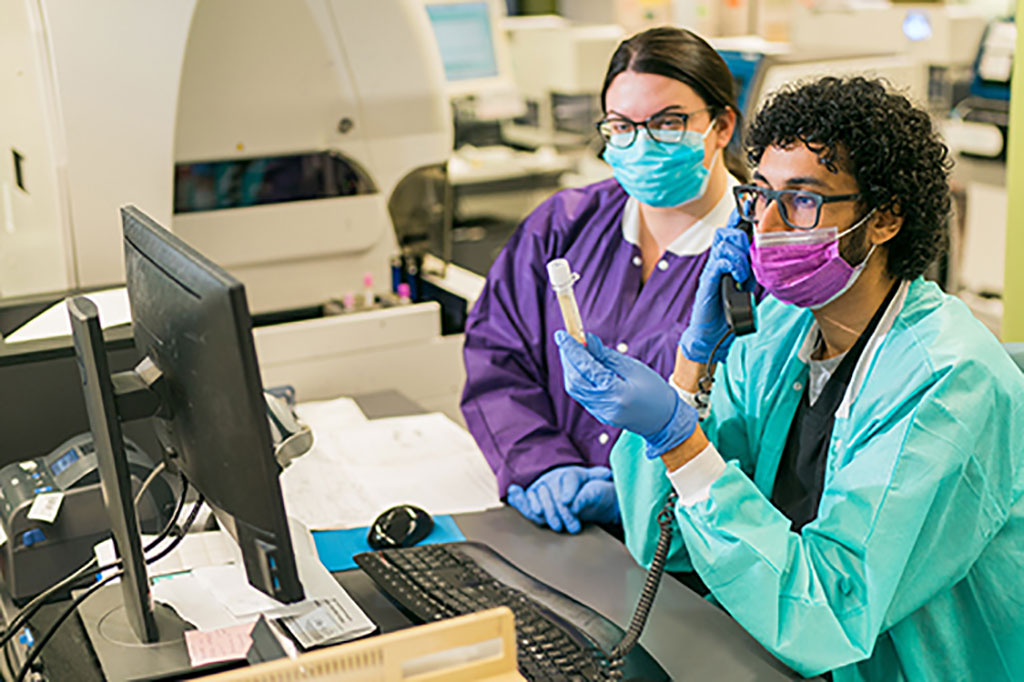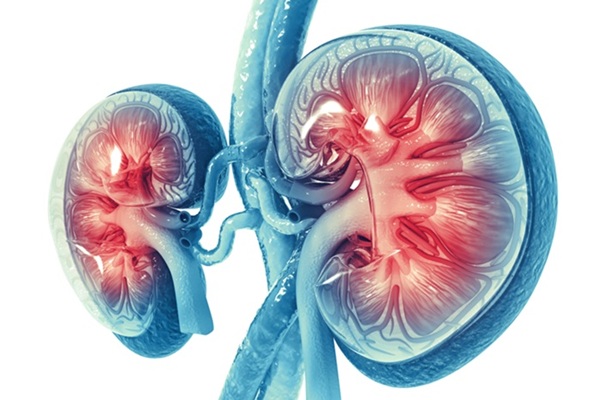Finding Needles in a Haystack: How One Lab Identified Random Errors in a Large Dataset
|
By Jen A. Miller (AACC) Posted on 07 Jul 2023 |

Illustration
Lab errors are bound to happen. A mishandled sample here, an equipment failure there—they’re usually not a big deal to fix. But infrequent random errors, especially in high-volume automated tests, can be challenging for clinical laboratorians to identify and rectify in real time. Yet doing so is critical because these problems affect patient care, over and over again.
“As much as we like to believe that errors should not occur in the clinical laboratory, they can and they do,” said Clarence Chan, MD, PhD, a clinical chemistry fellow in the department of pathology at the University of Chicago. “It’s important that we have a rational and objective approach to dealing with these kinds of situations.”
During a roundtable session at the upcoming 2023 AACC Annual Scientific Meeting & Clinical Lab Expo, Chan will present a case study about how his team discovered and investigated random errors that were reoccuring over time. He described the errors as hard to catch even though the lab had quality-control measures in place.
“That’s the whole point of quality control, but sometimes the errors are so sporadic that you don’t always see them,” Chan said. “By coincidence, we had a few primary care doctors asking us about [a couple of results].” That kicked off an investigation into what could be causing such odd and seemingly random recurring errors.
Chan said this case is unique because of its scope–the team reviewed more than 11,000 results over a fairly long period of time–and because it required them to identify a very small fraction of spurious results within that large group. While the details of his experience won’t universally apply to other labs, he hopes participants can learn from how they solved the mystery. This process included brainstorming possible issues and systemically investigating each one until they found the root cause.
Another way labs can benefit from Chan’s insights is hearing how the team applied tools like data analysis and data informatics to their investigation.
“The goal is not to give someone an exact prescription or algorithm of how you deal with these scenarios,” he said. “Every situation will be different.” He added that his team didn’t need high-tech tools to unlock their error-causing mystery. In fact, one of the most important pieces of software they used was Microsoft Excel. “We didn’t have to do any hardcore programming, even though we handle large volumes of data. Understanding how to effectively use Excel, while also recognizing its limits and pitfalls, can also help develop an approach for using more conventional programming software such as R and Python” he said.
The roundtable will empower laboratorians with little to no prior experience in data analytics to gain confidence using large datasets in today’s increasingly digitized healthcare system. This skill is becoming even more critical, given trends towards collecting and analyzing more data across healthcare settings, including clinical laboratories. Globally, “there’s been this push for how do we get that information more efficiently and make more out of it. We’re turning out patient results all the time,” he said. “Not only are you ensuring they're accurate and precise from a technical standpoint, but when there are questions about when things go wrong, how do we get the relevant information?”
“As much as we like to believe that errors should not occur in the clinical laboratory, they can and they do,” said Clarence Chan, MD, PhD, a clinical chemistry fellow in the department of pathology at the University of Chicago. “It’s important that we have a rational and objective approach to dealing with these kinds of situations.”
During a roundtable session at the upcoming 2023 AACC Annual Scientific Meeting & Clinical Lab Expo, Chan will present a case study about how his team discovered and investigated random errors that were reoccuring over time. He described the errors as hard to catch even though the lab had quality-control measures in place.
“That’s the whole point of quality control, but sometimes the errors are so sporadic that you don’t always see them,” Chan said. “By coincidence, we had a few primary care doctors asking us about [a couple of results].” That kicked off an investigation into what could be causing such odd and seemingly random recurring errors.
Chan said this case is unique because of its scope–the team reviewed more than 11,000 results over a fairly long period of time–and because it required them to identify a very small fraction of spurious results within that large group. While the details of his experience won’t universally apply to other labs, he hopes participants can learn from how they solved the mystery. This process included brainstorming possible issues and systemically investigating each one until they found the root cause.
Another way labs can benefit from Chan’s insights is hearing how the team applied tools like data analysis and data informatics to their investigation.
“The goal is not to give someone an exact prescription or algorithm of how you deal with these scenarios,” he said. “Every situation will be different.” He added that his team didn’t need high-tech tools to unlock their error-causing mystery. In fact, one of the most important pieces of software they used was Microsoft Excel. “We didn’t have to do any hardcore programming, even though we handle large volumes of data. Understanding how to effectively use Excel, while also recognizing its limits and pitfalls, can also help develop an approach for using more conventional programming software such as R and Python” he said.
The roundtable will empower laboratorians with little to no prior experience in data analytics to gain confidence using large datasets in today’s increasingly digitized healthcare system. This skill is becoming even more critical, given trends towards collecting and analyzing more data across healthcare settings, including clinical laboratories. Globally, “there’s been this push for how do we get that information more efficiently and make more out of it. We’re turning out patient results all the time,” he said. “Not only are you ensuring they're accurate and precise from a technical standpoint, but when there are questions about when things go wrong, how do we get the relevant information?”
Latest AACC 2023 News
- First-of-Its-Kind Single-Cell Clinical Microbiology Platform Wins 2023 Disruptive Technology Award
- Ground-Breaking Phage-Based Diagnostic Kit for Laboratory Tuberculosis Testing Presented at AACC 2023
- Laboratory Experts Show How They Are Leading the Way on Global Trends
- Unique Competition Focuses on Using Data Science to Forecast Preanalytical Errors
- Best Approach to Infectious Disease Serology Testing for Laboratorians and Clinicians Discussed at AACC 2023
- Breaking Research Throws Light on COVID, Flu, and RSV Co-Infections
- New Research Shows Self-Collected Tests Perform Similarly to Provider-Collected Tests for Detecting STIs
- AI Predicts Multiple Sclerosis Risk, Flags Potentially Contaminated Lab Results
- Scientific Session Explores Role of Technology in New Era of Specimen Transport
- Prevencio Presents AI-Driven Platform for Medical Diagnostic Test Development
- Scientific Session Explores Future Role of AI and ML in Clinical Laboratory
- SARSTEDT Demonstrates Pre-Analytic Innovations for Improving Specimen Quality, Reducing TAT and Automating Labs
- World's First Large Sample Volume, Open-Assay, Super-fast, Ultra-Sensitive, and Sample-To-Answer PCR Instrument
- Vital Biosciences Unveils Revolutionary POC Lab Testing Platform
- World's Smallest POC Device for Complete Blood Count in 30 Minutes Unveiled
- General Biologicals Unveils CTC Cancer Detection Products and Automated Molecular System
Channels
Clinical Chemistry
view channel
VOCs Show Promise for Early Multi-Cancer Detection
Early cancer detection is critical to improving survival rates, but most current screening methods focus on individual cancer types and often involve invasive procedures. This makes it difficult to identify... Read more
Portable Raman Spectroscopy Offers Cost-Effective Kidney Disease Diagnosis at POC
Kidney disease is typically diagnosed through blood or urine tests, often when patients present with symptoms such as blood in urine, shortness of breath, or weight loss. While these tests are common,... Read moreMolecular Diagnostics
view channel
Urine Test Detects Early Stage Pancreatic Cancer
Pancreatic cancer remains among the hardest cancers to detect early. In the UK, around 10,000 people are diagnosed each year, but only 5% survive beyond five years. Late diagnosis is a major factor—more... Read more
Genomic Test Could Reduce Lymph Node Biopsy Surgery in Melanoma Patients
Accurately determining whether melanoma has spread to the lymph nodes is crucial for guiding treatment decisions, yet the standard procedure—sentinel lymph node biopsy—remains invasive, costly, and unnecessary... Read moreHematology
view channel
ADLM’s New Coagulation Testing Guidance to Improve Care for Patients on Blood Thinners
Direct oral anticoagulants (DOACs) are one of the most common types of blood thinners. Patients take them to prevent a host of complications that could arise from blood clotting, including stroke, deep... Read more
Viscoelastic Testing Could Improve Treatment of Maternal Hemorrhage
Postpartum hemorrhage, severe bleeding after childbirth, remains one of the leading causes of maternal mortality worldwide, yet many of these deaths are preventable. Standard care can be hindered by delays... Read more
Pioneering Model Measures Radiation Exposure in Blood for Precise Cancer Treatments
Scientists have long focused on protecting organs near tumors during radiotherapy, but blood — a vital, circulating tissue — has largely been excluded from dose calculations. Each blood cell passing through... Read moreImmunology
view channel
Blood-Based Liquid Biopsy Model Analyzes Immunotherapy Effectiveness
Immunotherapy has revolutionized cancer care by harnessing the immune system to fight tumors, yet predicting who will benefit remains a major challenge. Many patients undergo costly and taxing treatment... Read more
Signature Genes Predict T-Cell Expansion in Cancer Immunotherapy
Modern cancer immunotherapies rely on the ability of CD8⁺ T cells to rapidly multiply within tumors, generating the immune force needed to eliminate cancer cells. However, the biological triggers behind... Read moreMicrobiology
view channel
Fast Noninvasive Bedside Test Uses Sugar Fingerprint to Detect Fungal Infections
Candida bloodstream infections are a growing global health threat, causing an estimated 6 million cases and 3.8 million deaths annually. Hospitals are particularly vulnerable, as weakened patients after... Read more
Rapid Sepsis Diagnostic Device to Enable Personalized Critical Care for ICU Patients
Sepsis is a life-threatening condition that occurs when the body’s response to infection spirals out of control, damaging organs and leading to critical illness. Patients often arrive at intensive care... Read morePathology
view channel
New Molecular Analysis Tool to Improve Disease Diagnosis
Accurately distinguishing between similar biomolecules such as proteins is vital for biomedical research and diagnostics, yet existing analytical tools often fail to detect subtle structural or compositional... Read more
Tears Offer Noninvasive Alternative for Diagnosing Neurodegenerative Diseases
Diagnosing and monitoring eye and neurodegenerative diseases often requires invasive procedures to access ocular fluids. Ocular fluids like aqueous humor and vitreous humor contain valuable molecular information... Read moreTechnology
view channel
Cell-Sorting Device Uses Electromagnetic Levitation to Precisely Direct Cell Movement
Sorting different cell types—such as cancerous versus healthy or live versus dead cells—is a critical task in biology and medicine. However, conventional methods often require labeling, chemical exposure,... Read more
Embedded GPU Platform Enables Rapid Blood Profiling for POC Diagnostics
Blood tests remain a cornerstone of medical diagnostics, but traditional imaging and analysis methods can be slow, costly, and reliant on dyes or contrast agents. Now, scientists have developed a real-time,... Read moreIndustry
view channel
Qiagen Acquires Single-Cell Omics Firm Parse Biosciences
QIAGEN (Venlo, Netherlands) has entered into a definitive agreement to fully acquire Parse Biosciences (Seattle, WA, USA), a provider of scalable, instrument-free solutions for single-cell research.... Read more
Puritan Medical Products Showcasing Innovation at AMP2025 in Boston
Puritan Medical Products (Guilford, ME, USA), the world’s most trusted manufacturer of swabs and specimen collection devices, is set to exhibit at AMP2025 in Boston, Massachusetts, from November 11–15.... Read more
Advanced Instruments Merged Under Nova Biomedical Name
Advanced Instruments (Norwood, MA, USA) and Nova Biomedical (Waltham, MA, USA) are now officially doing business under a single, unified brand. This transformation is expected to deliver greater value... Read more








 assay.jpg)















